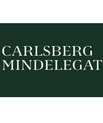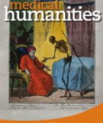Language as shaped by the environment: linguistic construal in a collaborative spatial task
Article published in Palgrave Communications
Abstract
What causes cultural groups to favour specific conventions over others? Recently, it has been suggested that cross-linguistic variation can be motivated by factors of the wider non-linguistic environment. Large-scale cross-sectional studies have found statistical differences among languages that pattern with environmental variables such as topography or population size. However, these studies are correlational in nature, revealing little about the possible mechanisms driving these cultural evolutionary processes. The present study sets out to experimentally investigate how environmental factors come to shape the emergence of linguistic conventions. To this end, we adapt the classical Maze Game task to test the hypothesis that participants routinise different linguistic strategies to communicate positions in the maze contingent on particular environmental affordances (i.e. structure of the mazes). Our results confirm that subtle environmental motivations drive the emergence of different communicative conventions in an otherwise identical task, suggesting that linguistic adaptations are highly sensitive to factors of the shared task environment. We speculate that these kinds of mechanisms found at a local interactional level, through processes of cultural evolution contribute to the systematic global variation observed among different languages.
Article
Language as shaped by the environment: linguistic construal in a collaborative spatial task: Jonas Nölle, Riccardo Fusaroli, Gregory J. Mills & Kristian Tylén. Palgrave Communications volume 6, Article number: 27 (2020)



